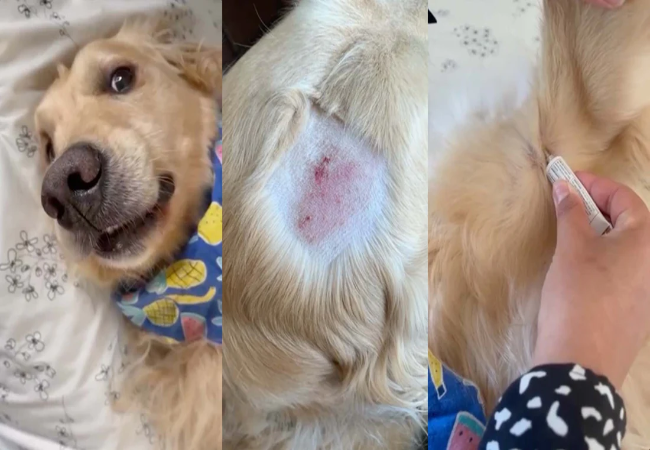Hot Spots on Dogs 2025: Causes, Treatment & How to Stop the Itch 🐶✨

In this article
Hot Spots on Dogs 2025: Causes, Treatment & How to Stop the Itch 🐶✨
By Dr. Duncan Houston BVSc
One day your dog’s skin looks fine. The next? A raw, red, weeping patch appears seemingly out of nowhere. That’s a hot spot—and it’s as painful as it looks.
I’m Dr. Duncan Houston, veterinarian and founder of Ask A Vet. Hot spots can pop up quickly and worsen even faster. Let’s go through what causes them, how to treat them, and how to prevent them for good.
🔥 What Is a Hot Spot?
- Also called acute moist dermatitis
- An inflamed, infected patch of skin that appears suddenly
- Usually red, moist, oozing, and painful to touch
📍 Common Locations
- Neck and cheeks (especially in dogs wearing collars)
- Hips, thighs, rump area (often from flea bites or allergies)
- Chest, belly, or feet (from licking or environmental irritants)
🔍 What Causes Hot Spots?
- Fleas: The #1 trigger for scratching and chewing
- Allergies: To food, pollen, dust, or grass
- Moisture: Under the collar, after swimming or bathing
- Insect bites: Mosquitoes, ants, ticks
- Ear infections: Cause itching near the head/neck
- Stress or boredom: Leads to obsessive licking or chewing
⚠️ What a Hot Spot Looks Like
- Red, raw, wet or shiny skin
- Hair loss around the area
- Sometimes crusty or oozing discharge
- Dog may constantly lick, chew, or scratch it
🩺 How Vets Treat Hot Spots
- Shave the fur to allow the skin to dry and breathe
- Clean with antiseptic solution (chlorhexidine or iodine)
- Apply topical treatment: steroid creams, antibiotic ointment
- Oral medications: antibiotics, anti-inflammatories, antihistamines
- Address underlying cause (flea control, allergy management, etc.)
💡 Home Care Tips
- Keep your dog from licking—use an e-collar or soft cone
- Clean gently 1–2 times daily as instructed by your vet
- Use hypoallergenic shampoo and avoid scented products
- Monitor for spreading, increased redness, or odor
🛡️ Preventing Future Hot Spots
- Stay up to date with flea and tick prevention
- Dry thoroughly after swimming or bathing
- Keep long-haired dogs groomed and mat-free
- Address allergies with vet guidance and dietary trials
- Provide enrichment to prevent boredom licking
🔗 Products That Help Ask A Vet
- Explorer Harness – Adjustable fit to avoid friction on healing skin
- Ask A Vet – Upload photos, get vet diagnosis and treatment advice in minutes
📋 Summary Excerpt
Hot spots are red, raw, and painful. A vet breaks down what causes them, how to treat them at home or with your vet, and how to prevent them from coming back.
❓ FAQs
-
Q: Can I treat a hot spot at home?
A: You can start by trimming fur, cleaning gently, and preventing licking. But vet treatment is best to control pain and prevent infection. -
Q: Do hot spots go away on their own?
A: Not usually. They often worsen quickly without treatment and can spread or become infected. -
Q: Are hot spots contagious?
A: No. But if caused by fleas, other pets can be at risk of infestation.






